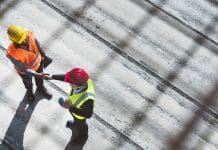Sheroze Nadim, associate at Forbes Solicitors, discusses the need for accountability for the RAAC crisis and advises construction businesses on how to proceed
Construction businesses working within the education sector are understandably concerned following the closure of hundreds of schools due to issues with Reinforced Autoclaved Aerated Concrete (RAAC).
The limitations of RAAC had not been widely understood outside of the construction industry, including the fact that its lifespan is typically no more than 30 years. Given its use in many of the UK’s public sector buildings, it’s clear that the cost to remedy the issue could run into the many millions, raising questions around liability.
As far back as 2022, the Government had published a safety alert warning of the dangers of RAAC, while a Department of Education annual report that same year went as far as labelling the risk of collapse as ‘very high’. Yet, despite this, no action was taken until this year as children returned to school following the summer break.
Afer Grenfell, building safety remains a high profile topic in UK construction
The industry will be loath to face another potentially damaging building safety scandal, particularly given the continuing discussions around cladding. However, the question of liability will undoubtedly arise as investigations continue and the scale of the problem becomes clearer.
Contractors and construction professionals would be wise to take this early opportunity to understand their exposure to RAAC projects, ensuring that they’re on the front foot and able to answer any questions.
Government intervention is likely; though dependent on political winds
While it’s true that Limitations of Time and Responsibility will apply in this case, we cannot rule out government intervention of some sort at this stage; we saw this approach in relation to cladding remediation, with liability retrospectively extended.
And with the 2024 General Election looming, the government is likely to be reticent to increase the already-substantial burden on taxpayers; will it look to the construction industry to foot the bill for any necessary repair works, instead? We’re unlikely to get any short-term clarity, but it’s important that construction businesses are prepared in the event that the answer turns out to be ‘yes’.
We also shouldn’t make the mistake of assuming that the main contractor will be the target of any attempts to claw back funds – architects, surveyors, project managers and engineers could also find themselves answering questions.
We would advise any business with involvement in RAAC projects to establish their position clearly – how many projects were delivered using the material and are any of those school buildings that have already been identified by the government?
When assessing risk, points to investigate are whether the designs and building specifications were issued alongside notices on the lifespan of RAAC, and whether the end-user was made aware of those downs-sides in comparison to alternatives.
RAAC’s long history in UK construction may complicate accountability efforts
Should a legal dispute arise, businesses will need access to relevant contractual documentation and any relevant information and records relating to the project or developments in question. As a first port of call, professional indemnity insurance cover should be reviewed carefully.
Unfortunately for the government, any attempt to secure capital for repairs could be challenging – given the timeframe for the use of RAAC, which has been widely used since the 1950s, it’s likely that many contractors no longer exist. Not only is it impossible to secure capital from businesses that have long ago closed their doors, accessing the documents to determine liability would add further complication.
The issues with RAAC are likely to extend beyond education buildings, with a notable impact on values and future redevelopment potential.
In the interim, businesses involved in the design and delivery of schemes using RAAC would be well-advised to complete a self-audit to establish their exposure to the issue, taking the time to do the necessary groundwork to ensure they’re well-prepared and on the front foot.

















